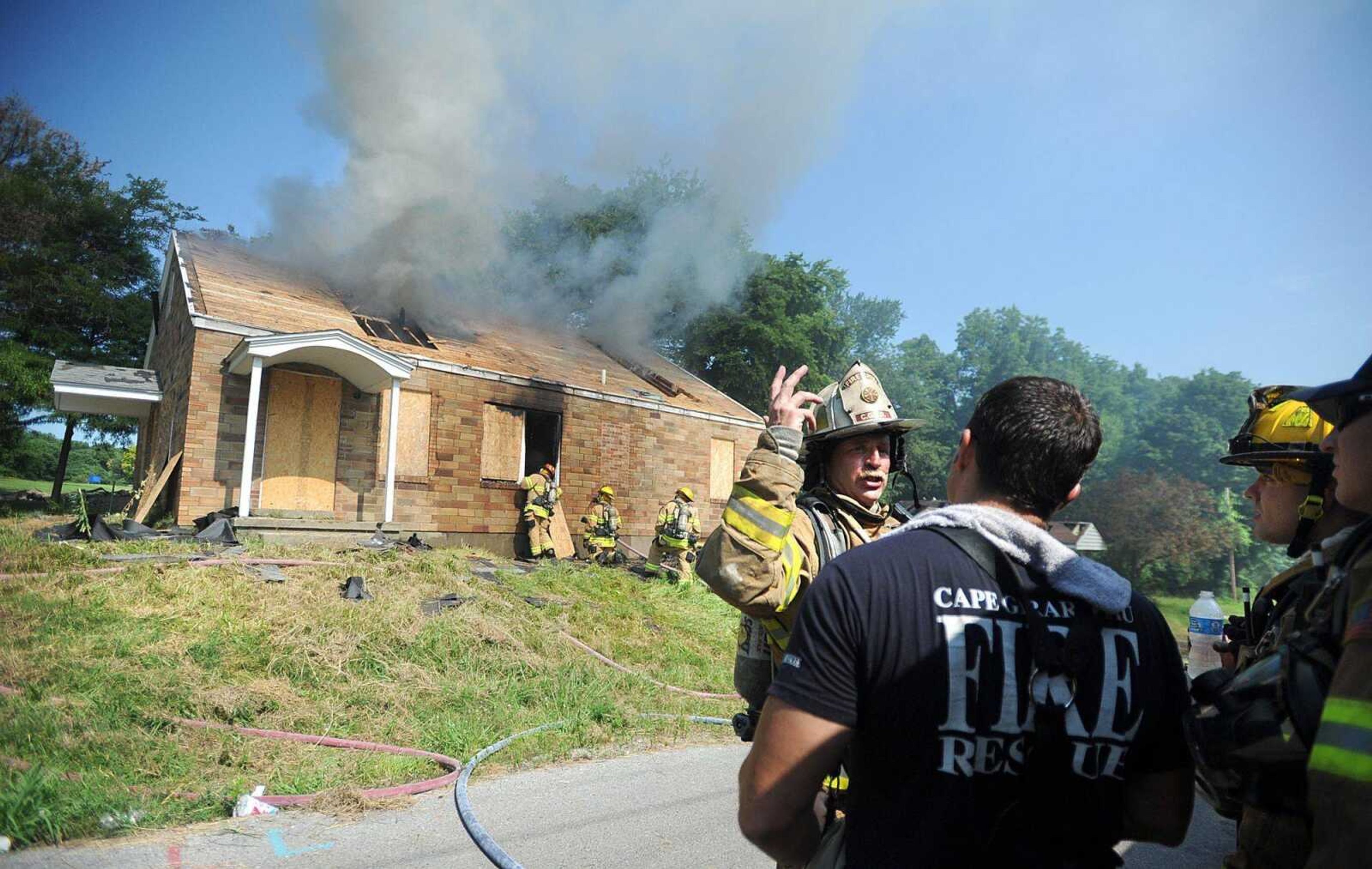Firefighters train with abandoned buildings
Cape Girardeau firefighters are participating in a science project of sorts this week as they ignite and extinguish fires in abandoned buildings. "We try to acquire vacant structures, because this is the best training," Cape Girardeau fire chief Rick Ennis said Tuesday morning as he supervised a live-burn exercise at an empty house near the corner of Spanish Street and Park Drive. "...This is the most realistic thing we can do."...
Cape Girardeau firefighters are participating in a science project of sorts this week as they ignite and extinguish fires in abandoned buildings.
"We try to acquire vacant structures, because this is the best training," Cape Girardeau fire chief Rick Ennis said Tuesday morning as he supervised a live-burn exercise at an empty house near the corner of Spanish Street and Park Drive. "...This is the most realistic thing we can do."
Orange flames shot from a hole in the roof of the structure.
As firefighters unleashed a blast of water on the blaze, steam and smoke billowed through the opening, replacing the flames, and flecks of ash drifted through the air.
Capt. Shawn Morris watched his colleagues swarm over the property.
"It's organized chaos. That's what we are," he said.
Firefighters lit several fires at the property, varying the conditions and observing how those conditions affected the way the fire behaved, Ennis said.
"The first fire, we had the bedroom door closed, so the only oxygen the fire was getting was through the window," he said.
With the door closed, fire came out the top of the window, and air came in through the bottom.
Firefighters opened the door before lighting the second blaze, causing flames to vent through the entire window rather than just the top, Ennis said.
The location of the flames, color and movement of smoke and other visual cues can tell firefighters what they're dealing with even before they get off the truck.
The goal is to practice until recognition and response become automatic, Ennis said.
"Most of firefighting is muscle memory and what we call cue recognition, because everything happens so fast, our people don't have time to think and process everything," he said. "...When you have to stop and think, that slows your reaction down."
Even the most basic skills require practice to master, Capt. Ray Warner said.
"Simple stuff as pulling the hose off the truck," Warner said. "You can screw that up bad."
Live-burn training is an ideal way to practice essential skills while trying out new firefighting techniques, Ennis said.
"Fire dynamics is a science, and it is predictable," he said.
In addition to watching the smoke and the movement of the flames, firefighters studied thermal layering -- the layers of heat and smoke within the building -- and how water affected them, Warner said.
Some prep work is required before firefighters can begin live-burn training.
For safety reasons, they must cut holes in the roof to let smoke and heat escape, and the Department of Natural Resources requires them to strip the shingles from the roof and remove any asbestos that might be in the building before setting it on fire, Capt. Randy Morris said.
The training also raises some logistical issues.
Typically, 15 firefighters are on duty at any given time, Ennis said.
During a live-burn exercise, an additional five or six off-duty firefighters join the crew, he said. If a fire breaks out somewhere else, the duty crew goes out to fight it while the off-duty crew stays at the training site to ensure the controlled burn doesn't turn into an out-of-control disaster.
In addition to improving firefighters' skills, the training provides a benefit to the property owners who donate unwanted or derelict structures to the department, Randy Morris said.
"Kind of a win-win," Randy Morris said. "They want to clear it. We get to train in it."
Not every structure is useful for training -- "we only burn when there's training value to them," Ennis said -- but the department is always looking for opportunities to practice and improve.
"We're always open for donations, for acquiring structures," Ennis said.
After the burn, firefighters planned to do a post-incident analysis -- a sort of debriefing in which they would look at video of the exercise and discuss their experiences, reviewing what worked well and what didn't, Warner said.
"It's a good tool," he said.
epriddy@semissourian.com
388-3642
Pertinent address:
Spanish Street and Park Drive, Cape Girardeau, MO
Connect with the Southeast Missourian Newsroom:
For corrections to this story or other insights for the editor, click here. To submit a letter to the editor, click here. To learn about the Southeast Missourian’s AI Policy, click here.










